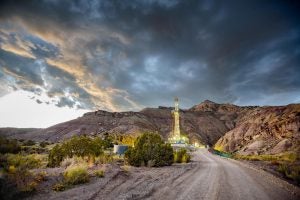New well integrity rules make Colorado a leader in well safety for workers and neighbors
 The state of Colorado is poised to adopt some of the nation’s most sophisticated and protective regulations designed to prevent its 60,000 oil and gas wells from leaking or exploding.
The state of Colorado is poised to adopt some of the nation’s most sophisticated and protective regulations designed to prevent its 60,000 oil and gas wells from leaking or exploding.
Colorado has a history of leading on oil and gas regulatory issues to reduce risks to families, workers and the environment, including the nation’s first regulations to address climate-damaging methane emissions from the industry in 2014. In the wake of the 2017 Firestone tragedy and the passage of a major oil and gas reform bill (SB 181) in 2019, the state has undertaken a whole slate of rule modernizations. Well integrity, for which rules have not been updated since 2008, is up next.
Ensuring that wells do not leak or explode is a top priority for any oil and gas agency. For the Colorado Oil and Gas Conservation Commission updating well integrity rules will not only reduce risks for oil and gas workers in the state, but will also help protect the 500,000 Coloradans who live within a mile of an oil or gas well in the state. Since 2016, COGCC records show around 40 well integrity incidents, including significant blowouts in Hudson and Berthoud in 2017. And that figure is likely an underreporting given how difficult it can be to determine whether a leak is occurring deep underground.
New well integrity rules make Colorado a leader in well safety for workers and neighbors Share on XLeaks from oil and gas wells can contaminate aquifers or release methane into the atmosphere. In the most serious cases, methane can migrate into homes and pose explosion risks. Oil and gas well blowouts are dramatic fluid releases that can endanger workers, residents and the environment. They occur most often during drilling, but are possible during any phase of a well’s multidecade lifespan. Major blowouts in recent years have rocked Ohio, Oklahoma, the Gulf of Mexico and California’s Aliso Canyon.
Importantly, history shows us that smarter and better rules really work. A year after Texas adopted new well integrity regulations, including many similar policy recommendations from EDF, blowouts in Texas fell by 40% and injuries from blowouts fell 50%.
Over the last year, a stakeholder coalition that included EDF and operators representing more than 90% of the production in Colorado has been working to develop a joint set of proposed rule revisions, based on a peer review by the State Oil and Gas Regulatory Exchange, that protect workers, the environment and residents, and take into account the needs of the state’s energy businesses.
The COGCC’s proposed rule, which will be voted on in late February, reflects all of the coalition’s recommendations, and EDF strongly supports its passage (Colorado environmental groups are also broadly supportive of the rulemaking, and EDF supports the tweaks they seek to the definition of protected water). It addresses essentially all of the potential regulatory gaps flagged by the peer review, reduces specific risks related to Colorado’s oil and gas wells identified in the technical literature, and adheres closely to EDF’s Model Regulatory Framework on well integrity. In other words, it would bring Colorado to the head of the class on well integrity regulation nationwide.
Some highlights include:
- Regular monitoring of every well in the state for leakage risks.
- Improved criteria for cement placement, quality and testing.
- New safety controls during hydraulic fracturing.
- More comprehensive efforts to prevent frac hits.
- Better plugging protocols.
- New emergency response planning requirements.
Overall, there are dozens of new improvements, and many of them clearly demonstrate national leadership. EDF is excited that Colorado is getting ready to adopt such a strong rule developed in a collaborative, science and risk-based manner. Other states may find much to replicate in both process and substance, and this rulemaking establishes strong momentum in Colorado’s stead for the next rounds of rule upgrades required under SB 181.










